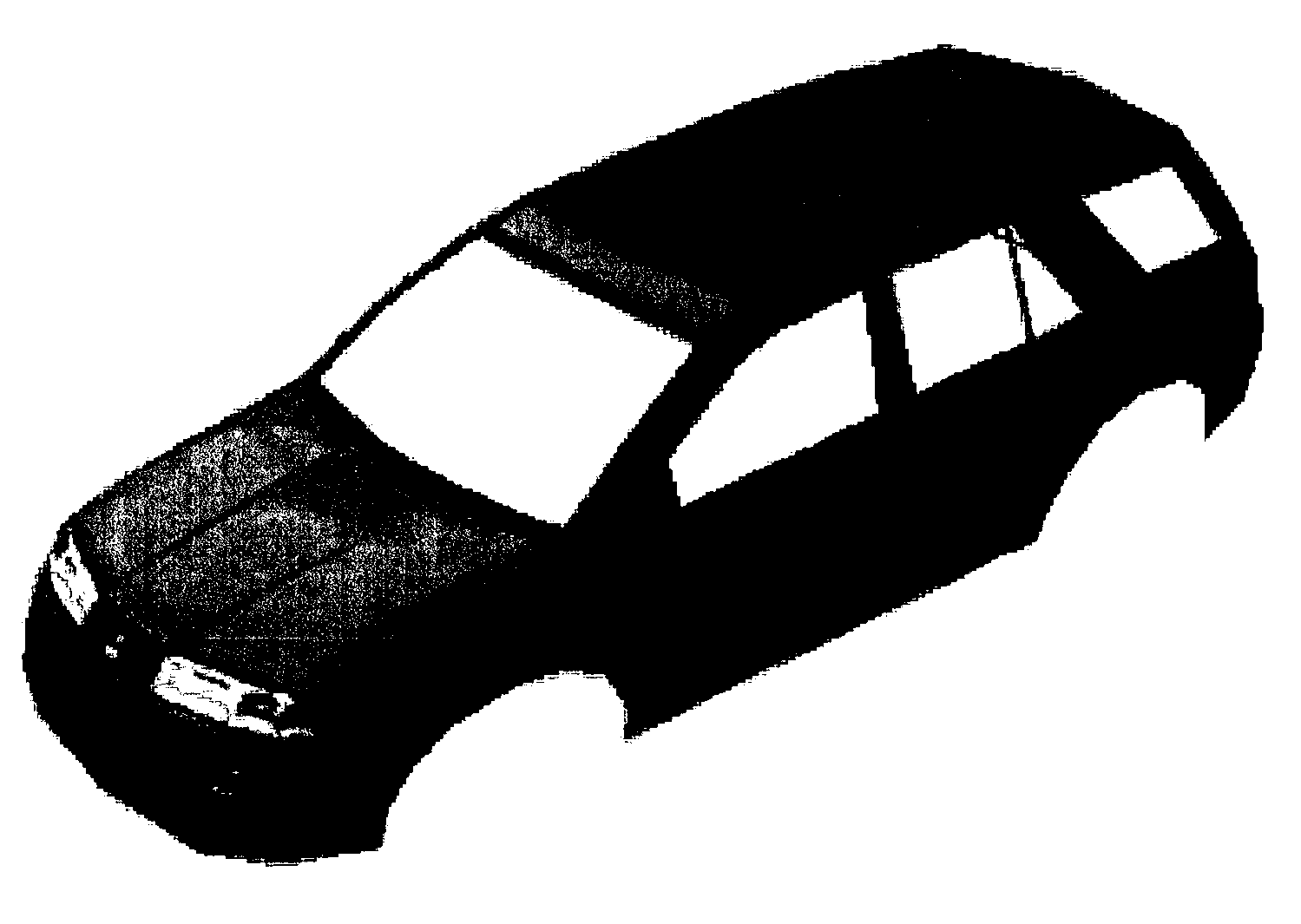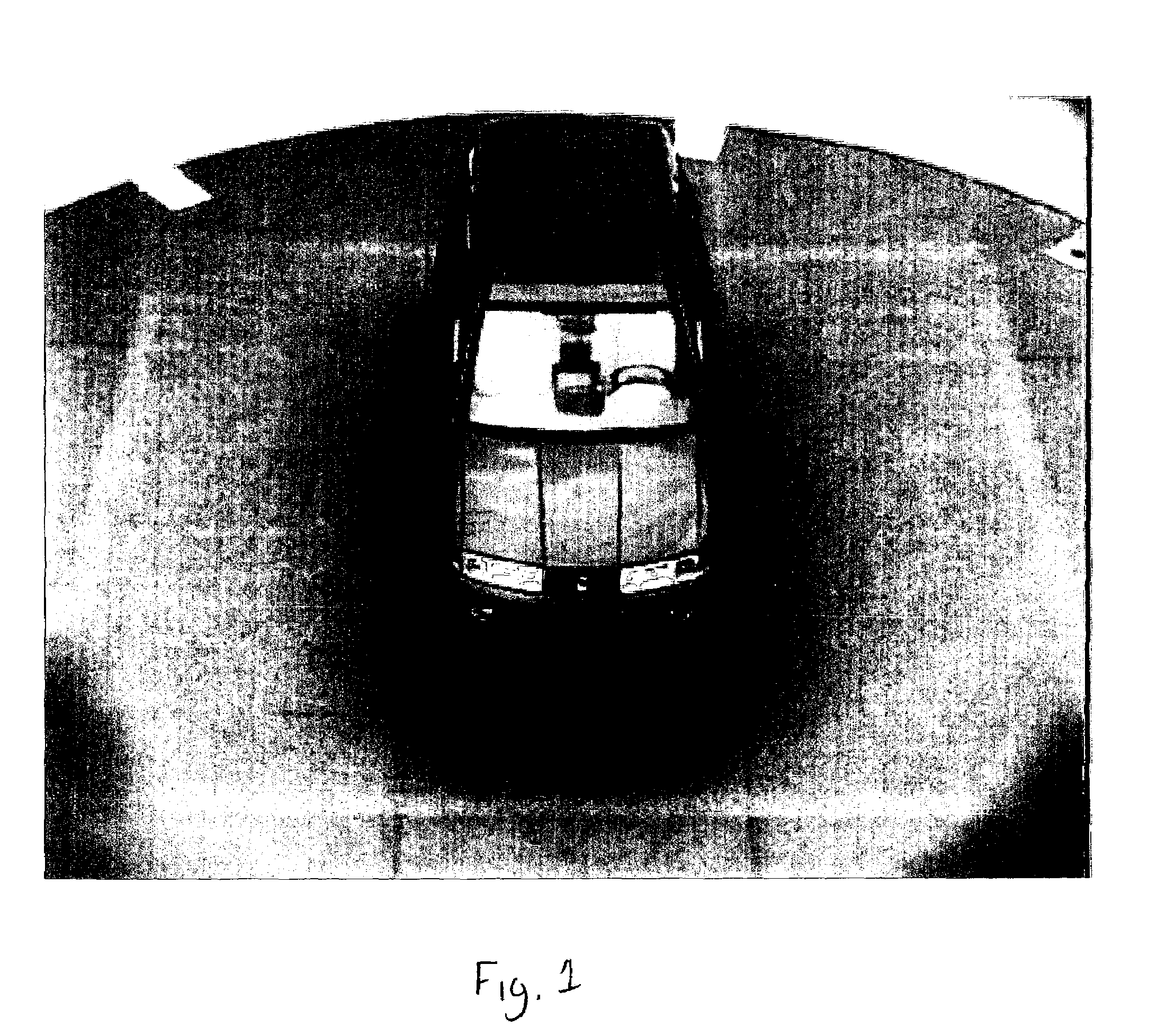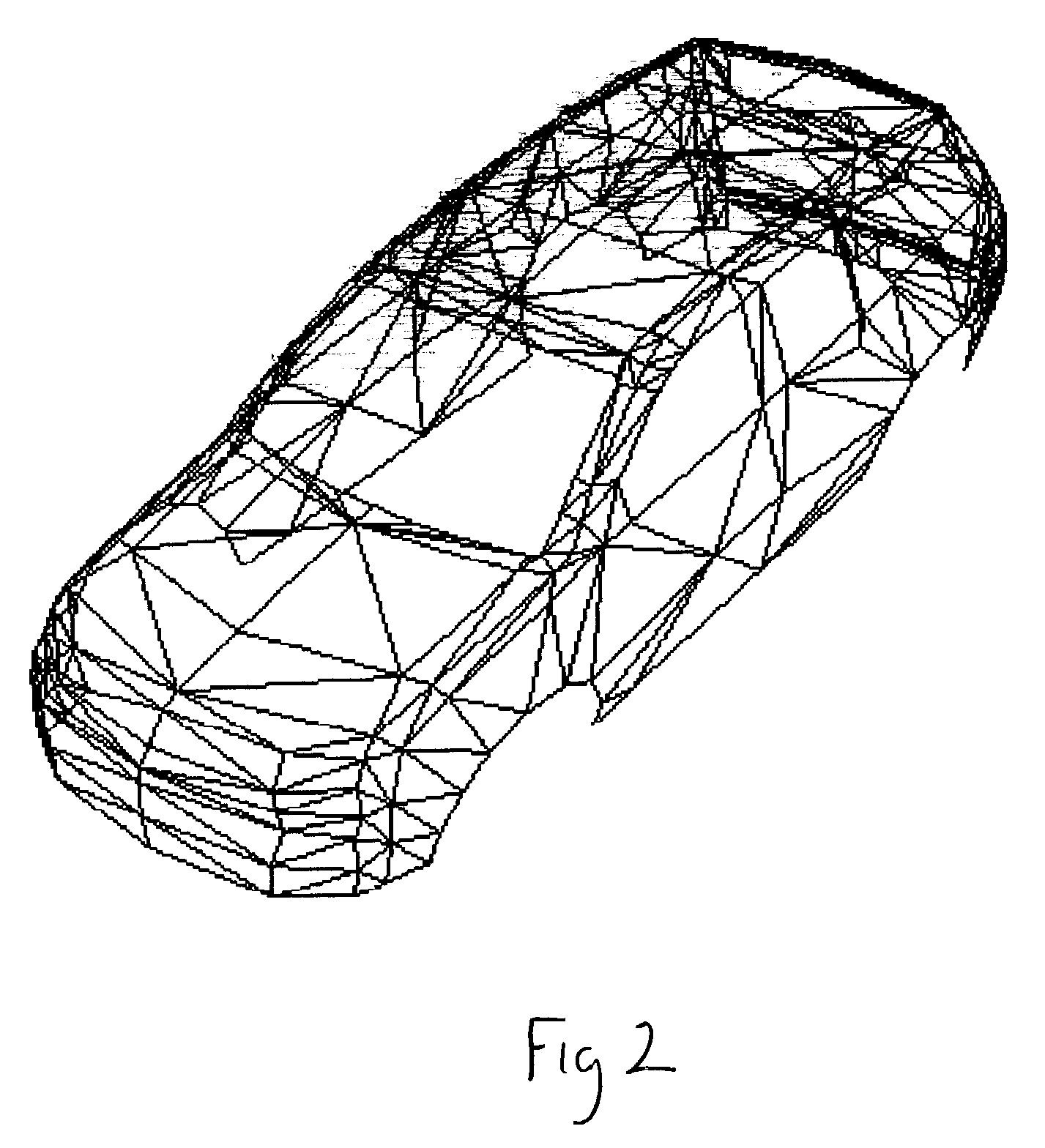Preparing digital images for display utilizing view-dependent texturing
a technology of digital images and texturing, applied in the field of computer software for graphical representation, can solve the problems of reducing the actual creation of photorealistic content, unable to efficiently render the number of polygons in the computer graphics scene, and unable to achieve the effect of high detail
- Summary
- Abstract
- Description
- Claims
- Application Information
AI Technical Summary
Benefits of technology
Problems solved by technology
Method used
Image
Examples
Embodiment Construction
[0113]The present invention is intended to provide computer graphics software users with enhanced realism in digital images produced by their software. Such detail is especially useful when using highly realistic photograph-based images such as those provided by ArchVision Inc. under the trademark RPC, which stands for “Rich Photorealistic Content.” The present invention is also effective with other images, such as computer-generated images.
[0114]In order to achieve enhanced realism, the present invention provides realistic texture data for use by graphic display software that will provide realistic textures from 3-D images based on the viewing position and, more particularly, in the case of photo-based images, the viewing position of the cameras used to capture the images for display. The present invention can provide view-dependent texture data that is applied to the underlying geometry of an image, or a plurality of images, without the need for storing or applying varying texture...
PUM
 Login to View More
Login to View More Abstract
Description
Claims
Application Information
 Login to View More
Login to View More - R&D
- Intellectual Property
- Life Sciences
- Materials
- Tech Scout
- Unparalleled Data Quality
- Higher Quality Content
- 60% Fewer Hallucinations
Browse by: Latest US Patents, China's latest patents, Technical Efficacy Thesaurus, Application Domain, Technology Topic, Popular Technical Reports.
© 2025 PatSnap. All rights reserved.Legal|Privacy policy|Modern Slavery Act Transparency Statement|Sitemap|About US| Contact US: help@patsnap.com



